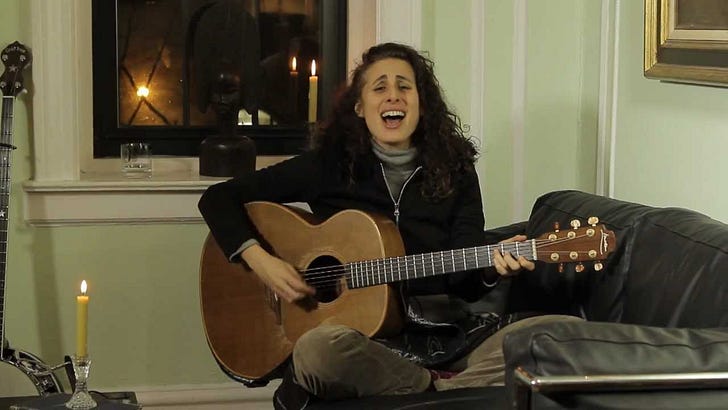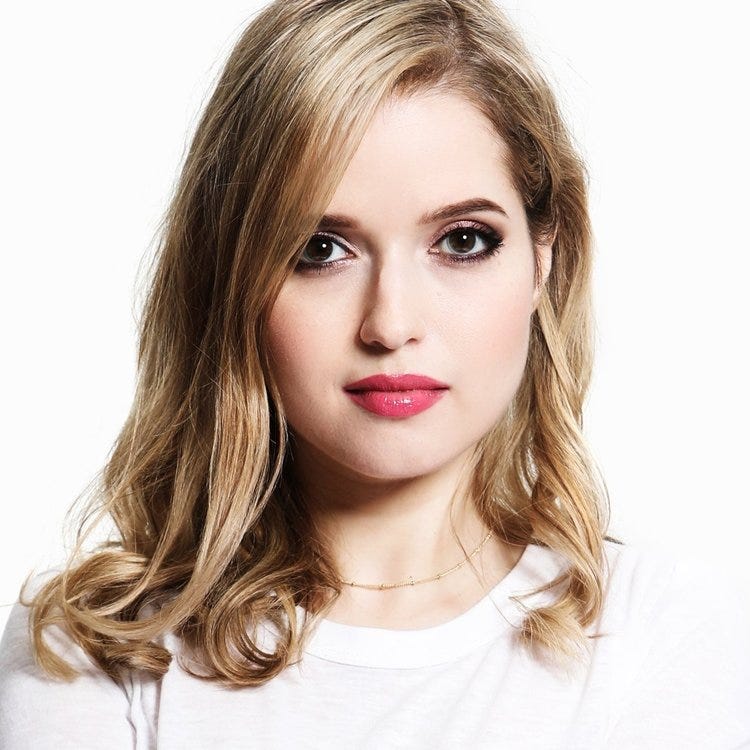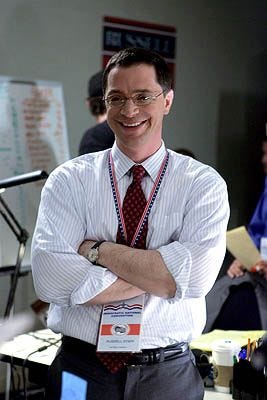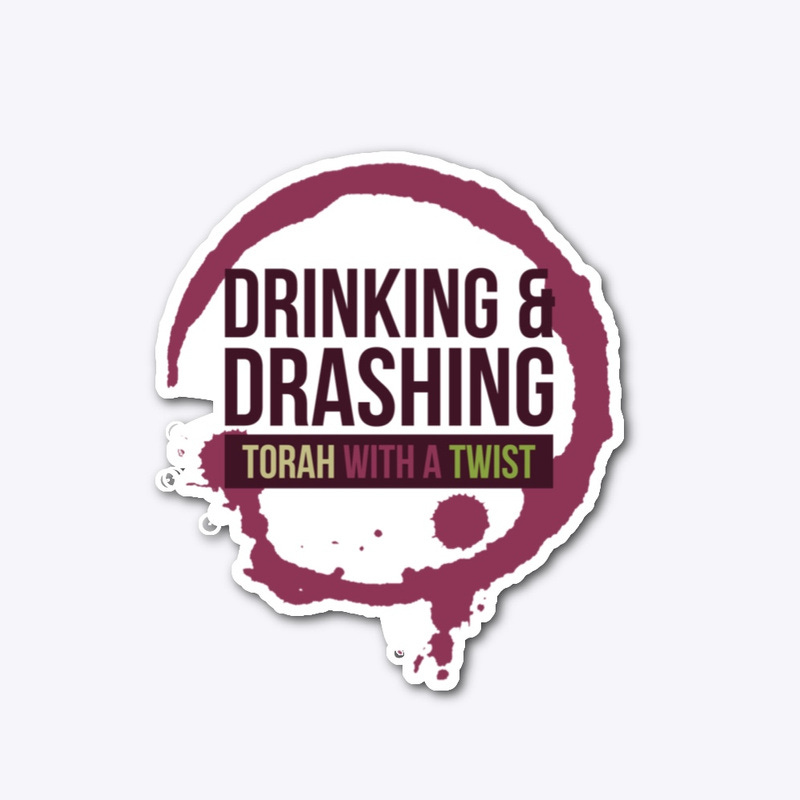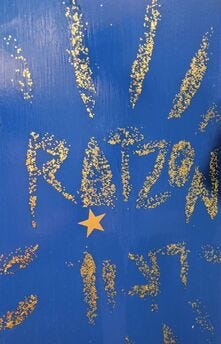Basya Schecter founded a group called Pharoah’s Daughter and I’ve been a fan since its second album, Out of the Reeds (2000). Then, many years later when I connected with Romemu Synagogue, I was surprised / not surprised to discover Schecter is the chazen. There’s a story about my daughter, Batya, and Pharoah’s Daughter that I wrote about here.
To unsubscribe from this newsletter, click the link at the very bottom of the page.
Mom’s about the same, mentally and physically.
My tactic of keeping Mom up as much as possible during the day seems to be working, for the most part. Keeping her awake during the day seems to be a good way to keep her asleep during the night. I’m such a softie though. During the day, when Mom complains about being tired or cold or both and she sneaks off to her bedroom, it’s hard for me to burst in and roust her out of bed. On the other hand, three or more consecutive nights of interrupted sleep inflicts huge wear and tear on me. And, what’s even more difficult, after getting up anywhere from midnight to 3am, my body get acclimated to it. Even when Mom doesn’t call out for me, it’s likely that I’m get up anyway.
Mom doesn’t seem to be reminiscing as much as she used to when I first arrived. Then, I could prompt her to tell me stories. Now, nothing. She’ll get fixated on an issue: Coffee. The wind blowing the trees. The squirrels playing on the deck. And she’ll stay with that until something new comes along.
One of the hard things I have to do is put Mom into the right timeframe. For her, anytime she wakes up, it’s morning and she wants coffee and toast. I have to explain to her it’s 6 pm, not 6 am for example. Or I have to explain that certain people have passed on. I gently nudge her in the right direction.
I’ve read that it might be best to play along with her, to let her believe that she’s just returned home from a long day teaching school, for instance. I don’t know. I don’t know if I can do that because it will pull me into her reality and out of mine. And my own hold on reality is rather tenuous as it is.
My mental health.
I dropped Cerebral like a hot rock. We finally reached the point that it couldn’t connect me with any help that was in my insurance network. And… lots of other things that are far too tedious and frustrating for me to detail.
I contacted my insurance company and got a list of in-network providers and decided to go with a large psych clinic in Arkansas called Alleviant.
I’ve met both my prescriber and therapist and the meetings went well. My prescriber immediately sent my prescriptions to my pharmacy and they were filled the next day. No gaps, no changes, … so far. My prescriber had a super smart suggestion: a genetic test will reveal how well my meds are working and if any changes might be advisable. I received a testing kit the next day. In my second meeting with my prescriber, we’ll go over the results of the test and take it from there.
And I’ve already met with my new therapist. She is very experienced with two therapies I’ve done in the past that have worked for me, DBT (dialectical behavior therapy) and EMDR (eye movement desensitization and reprocessing). She’s proposing that we use both therapies and I think that might be the right way to go. One of the therapies, EMDR, is rigorous and takes a lot of energy.
OK. I won’t be shy about this. That’s not my style.
EMDR falls in the broader category of desensitization therapy. That means that the patient, me, relives trauma so as to better process and incorporate it. With my 9/11 experience, it meant reliving that day over and over again in a safe and supervised environment until I realized the experience was in the past, not the present. It was intense. And it worked. Prior to the therapy, I was having harrowing flashbacks. A low flying airplane could trigger me or someone reminding me of Mark Bingham, my friend who died on Flight 93. After therapy, I was much, much better.
DBT is a very popular therapy because it directly addresses the symptoms and doesn’t get tangled up in root causes. It’s simple and measurable. Insurance likes that. For example, if I feel a panic attack coming on, I have a list in my head of things to do to squelch the attack. It’s a long list that ranges from watching Star Trek to tapping my forehead to taking a shower to listening to really good music. I had DBT for about a year, three days a week, as an outpatient. It was drilled into me. And it works. Feeling anxious? Do something that’s calming. Simple. Effective. Brushing up on my DBT skills couldn’t hurt.
Jewish stuff. And lots of it.
The newsletter I’m writing for my synagogue’s Shabbat Gathering is going strong. When Rabbi Laurie came back from her sabbatical, she started plugging it in the synagogue’s general newsletter and I gained eight new subscriptions.
I try to have three newsletters finished and in my bank at all times. I don’t have any trouble finding new topics to write about, and I don’t have any trouble finding the words to write, but I like having the security of having three newsletters finished and ready to go. The topics I’ve covered so far include…
Mi Shebeirach
Blessing children
Kaddish
One of the secondary goals of writing, designing and publishing the Shabbat Gathering newsletter has been to test a platform called Ghost. The newsletter you’re reading right now is published on a platform called SubStack. Ghost is a distant rival to SubStack. It isn’t as feature rich and the metrics aren’t as good, but it’s a good platform for a simple newsletter. One of the nice things about Ghost is that it aggregates all my content into a simple, blog-like website.
The Shabbat Gathering.
Rabbi Laurie is the one who originated calling what we do on Friday nights a Shabbat Gathering rather than Kabbalat Shabbat because we don’t do a full service. This means that we can get through the service in maybe 45 minutes (including schmoozing) which is just about the right amount of time after a long week.
What’s interesting to me is that the Shabbat Gathering is a brand new offering for the synagogue. It’s Zoom native. Before the pandemic, we had Friday night services face-to-face maybe once a month. When the pandemic started, Rabbi Laurie saw that having a simple, Zoom-based Friday night “gathering” would be of service to the community and so it has. In other words, it is an original creation in response to the pandemic that has become a chavurah for many of us. I love our Shabbat Gathering.
Torah study.
I’ve added a few new resources to my study of the weekly Torah portion. I’m following The Social Justice Torah Commentary, The Mussar Torah Commentary, and Finding Recovery and Yourself in Torah: A Daily Spiritual Path to Wholeness. These are in addition to the texts I’ve already been using this year which includes the Sefat Emet.
Daf reactions.
I haven't been sucked in to TikTok except for following one person, Miriam Anzovin. In Jewish life, there is a group of people who participate in a course of study called Daf Yomi. For seven years, a group of people around the world learn one page of Talmud everyday. (It's harder than it sounds.) Everyone around the world is on the same page at the same time. Anzovin shares her analysis every day on TikTok and she is AMAZING. She’s formerly "frum," (seriously Orthodox) who dropped out of that life and now identifies as an atheist although I seriously doubt she actually is. Anyway, she does a great job summarizing the page and speaking to what it means to contemporary life using contemporary communications. Gender is one of her points-of-view. You can look her up on TikTok (@miriamanzovin). It's worth a look even though you might not have any idea what she's talking about. She's a hoot.
Jewish podcasts.
The other medium I’m getting sucked into is podcasting. There’s a new podcast called Chutzpod that I highly recommend. Chutzpod is hosted by Rabbi Shira Stutman and Joshua Malina, the actor probably most recognized for his role on The West Wing. Rabbi Shira is a Reconstruction rabbi and the founding rabbi of the Sixth & I synagogue in Washington DC. It’s a lively show that has notable guests every week.
Another podcast I can recommend is Drinking and Drashing, a podcast one of my study partners suggested to me. The hosts are both rabbinical students at Hebrew Union College. Each week, Drinking and Drashing brings in a guest to speak on the parsha.
Yiddish.
I have about 330 consecutive days of Yiddish study. I’ve inched forward from where I was last time I checked in with you. I’m up to learning about boyfriends and girlfriends which seems useful.
In a wild, impetuous act, I’ve signed up for Hebrew lessons with The Great Courses. I’ve hit a wall on my previous attempts and hope to break through this time.
Classes.
I’ve started two new classes with Hadar. One course is Midrashic Tales of Jewish Survival in Egypt. It’s taught by Rabbi Tali Adler. I’ve taken a class with her before and she’s smart and well-spoken. In the first class we pondered the question about why, when the Israelites were instructed to flee from Egypt with only what they could carry on their backs, the women packed musical instruments that they used for an impromptu rave after crossing the Sea of Reeds. My chavruta (study partner) is a NASA scientist in Houston and we’ve set up our meetings for Shabbat afternoons. The other course I’m taking with Rabbi Adler is called Rediscovering the Exodus: Plagues, Prayers, and Salvation in the Thought of the Ramban. In the first class, we studied what Ramban said was the reason G-d caused the Israelites to become enslaved in Egypt in the first place. No spoilers.
Hadar offers interesting classes taught by interesting professionals at a very reasonable price. Highly recommended.
Ratzon.
In another way to build community for myself, I’ve started participating in Ratzon’s weekly meditation and Torah study program on Friday mornings. I’ve participated in one meeting so far and I’m eager to do it again. At the beginning of the meeting, some of the daily prayers are chanted. Then, there’s a ten minute meditation followed by Torah study.
This is how Ratzon describes itself:
Ratzon is Hebrew for yearning and possibility. … We believe that ancient traditions can nurture us and teach us how to seek justice. Led and supported by the Jewish community, Ratzon uses a foundation of Jewish practice to create rituals and learning opportunities that further healing and resistance.
It seems like a good group. The Jewish practices are grounded in Renewal Judaism which is one of my favorite “flavors” of Judaism.
Another of Ratzon’s programs is the Jewish Anarchist Salon. The salon draws on Judaism’s long-time focus on non-hierarchical paradigms and politics. I’ve attended one meeting already. What I saw and heard interests me enough that I’ll attend the next meeting. For me, it’s a good connection between my faith and my politics. This is how Ratzon describes it’s approach to anarchy:
At our core, we aim to create non-hierarchical communities. We question hierarchies that exist in our relationships and our broader world. The foundation of our programs and infrastructure draws upon the resistance work and culture building of past and contemporary anarchist movements.
Journaling.
One habit I’ve had for a long time is journaling. A few years back, I read / followed The Artist’s Way and a pillar of that program is daily journaling. And I know there are supposed to be psychological benefits from journaling. I use journaling to write my story the way I want it read. My journal isn’t entirely positive self-talk. It’s grounded in reality, but with some positive “spin” on it. Afterall, I intend to be the hero of my own story and I have four decades of experience with “spin.”
Since I’ve moved to Arkansas to take care of Mom, and I’ve ended up with a bit more time on my hands, my journaling has become more extensive and intensive. I fill one page in very small script in my Hobonichi Techo Planner every day. Recently, I acquired a five-year journal that’s designed by the novelist Tamara Shopsin (author of Laserwriter II). The notion of a five-year journal is that there are five spaces for entries per page, one entry for each year, and one day per page. As the journal fills up, it’s easy to look above the current entry and see what one was doing previous years on that date. I use a Moleskine phone app called Page Camera to capture each page in my journals, convert it to .jpeg and .txt files and then push those files to an archive on my DropBox.
I’m with Neil Young and Joni Mitchell.
In my last email, I forgot to mention that I’ve moved from Spotify to Tidal for my music streaming. I have what I like to think of as a long-term, deep, and meaningful relationship with Neil Young and Joni Mitchell so when they said they were leaving Spotify, it didn’t take me but an instant to follow them out the door and cancel my Spotify subscription. I moved to Tidal because it was started by artists and compensates artists better than Spotify. Tidal also offers high resolution music files I can enjoy. Now, it wouldn’t be fair for me omit that Tidal doesn’t have the depth and breadth in classical music, jazz, klezmer and podcasts that Spotify does. And that’s too bad. But my conscious is clear.
First contact.
Mom and I are almost caught up with Star Trek: Discovery which means that we’re up to stream the new episodes as they are released. We’re on season four of Star Trek: Voyager with three more seasons to go after that. After Voyager, Mom and I will move on to Star Trek: Deep Space Nine. It ran for seven seasons, so we won’t run out of episodes any time soon. And after that, we’ll start Star Trek: Picard and we’ll have Star Trek: Strange New Worlds after that. I haven’t decided what I’ll do about watching the original series. I’ve seen all those episodes over and over and over again as a lad. Oh, and I just read that there’s a new movie coming out!
Chess.
I’ve started The Great Courses course on chess and am still in the “how the pieces move” section. So I’ll let you know what I think as I delve deeper into the course. I’ve also decided to take lessons from a book and have selected The Soviet Chess Primer by Ilya Maizelis. Gary Kasparov and Anatoly Karpov both endorse the book and I have a lot of respect for the Soviet chess program when it was in it’s heyday, so the book might be a good fit for me. I’ll let you know. I did win a game against my buddy on March 9, a day I’ll remember for a long time. We play 30-minute games. That means we have 30 minutes each to make all our moves. In addition to playing against my buddy, I’m play someone in Fayetteville. We play what’s called three-day games. Each player has three days to make one move. It’s a good format for people who are busy living their lives. I’ve also started playing games with random people chess.com matches with me based on our playing level.
Cool apps.
Since upgrading my cellphone, finally, I’ve been enjoying using some apps I wasn’t able to before including a suite of apps from my favorite notebook maker, Moleskine. I use Actions to keep track of talking points I want to present during meetings. I use TimePage for my calendar. I use Journey for my planner. And I am trying Balance to help me achieve my goals and better understand which activities are most rewarding for me. Honestly, there’s some overlap between some of these apps, but I’m using them all to settle in on which one, or more, I’ll continue to use.
In conclusion.
SubStack is telling me this email is too long for people who use gmail. Rats. As Mark Twain purportedly said, “I would have written it shorter if I had more time.” So, I’ll leave it here. I miss you and hope this finds you well and safe.
All my love,
brian.
